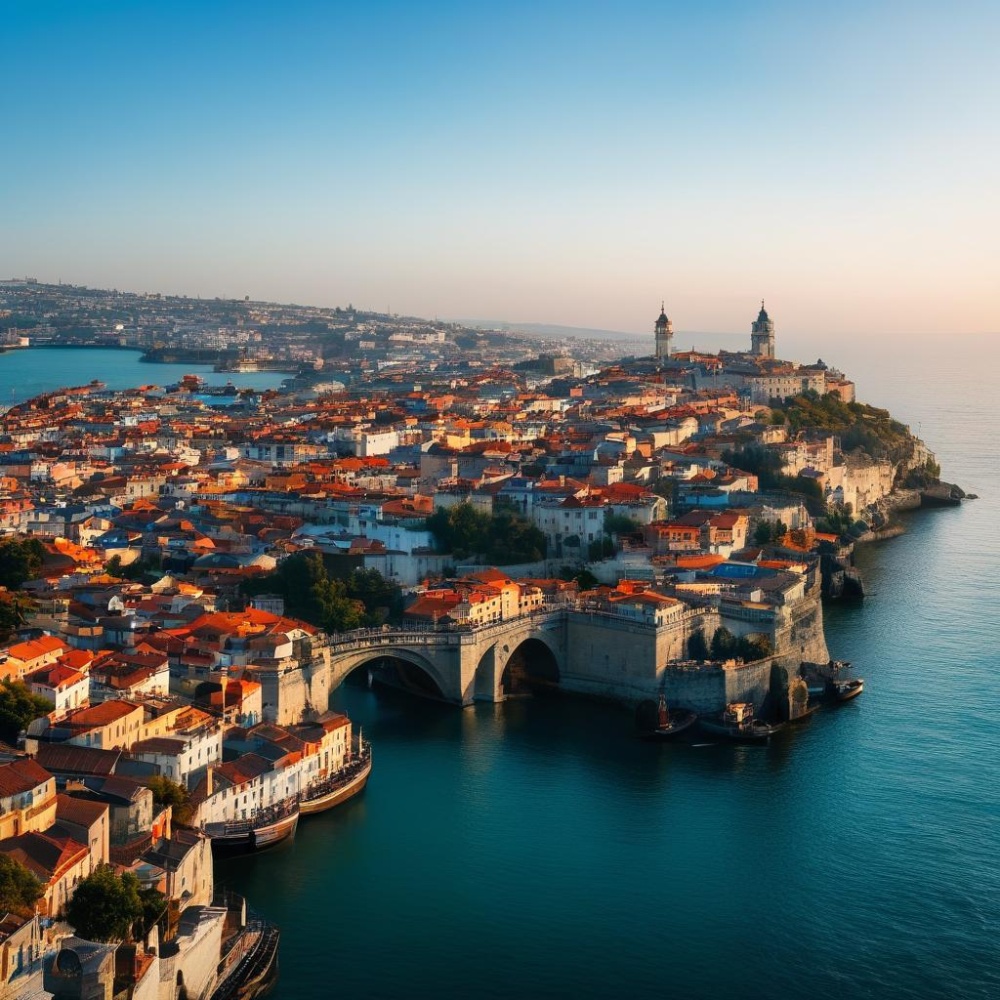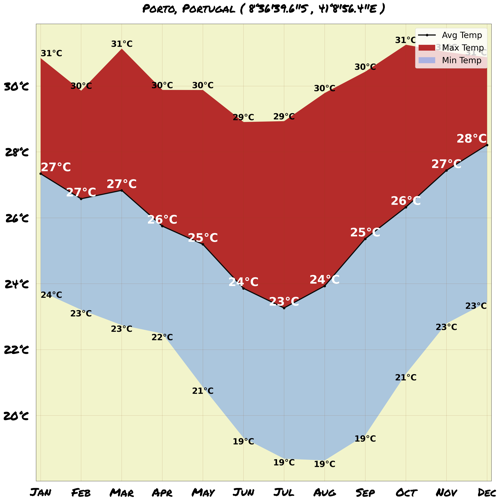Understand
Porto is a bustling city with a rich industrial and commercial center. While the city itself may not have a large population, the Greater Porto metropolitan area is home to over 2.5 million people. This area includes nearby cities such as Gaia, Matosinhos, Maia, and Gondomar. Built along the hills overlooking the Douro river estuary, Porto's historical center has been recognized as a UNESCO World Heritage site. Since at least the 4th century, this city has been continuously inhabited, and its captivating history can be felt throughout. Porto enjoys a semi-Mediterranean climate, with oceanic influences that make it cooler than other cities in this region. While summers can bring occasional heatwaves with temperatures reaching 40C, winters are mild and humid. In fact, temperatures can drop below freezing at times. As a city with a strong mercantile tradition, Porto's architecture reflects its trading past. The Avenida dos Aliados, the bustling heart of the city, is lined with buildings that exude grandeur and granite charm. In fact, the city center stands out from other Portuguese cities as it is characterized by its monumental and granite structures. Porto is a city with a distinct identity, and its residents proudly separate themselves culturally from the southern part of the country, particularly the Lisbon region. They often say, "Porto works, Braga Prays, Coimbra studies, and Lisbon gets the money." This feeling stems from the centralization of government decisions in Lisbon, which the people of Porto believe may not always be fair to their region. Over the years, Porto has undergone significant reconstruction, transforming into a clean and welcoming city that attracts numerous visitors. Although the initial impression of its inhabitants may be seen as harsh, they are known for their kindness, accessibility, and willingness to assist. Porto holds the official title of "a muito nobre, sempre leal e invicta cidade do Porto" (the very noble, always faithful, and invincible city of Porto). This title was earned due to the city's resilience during the "Cerco do Porto" (Porto's Siege) civil war from 1832-1834. The architectural landscape of Porto is both diverse and captivating, with medieval and modern buildings coexisting harmoniously. The city's hilly geography offers stunning views, with buildings carved into the cliff faces overlooking the river. Exploring these areas may involve navigating stairs cut into the stone, making for a rewarding but physically demanding walking tour. While the locals have a friendly attitude, it's worth noting that their responses to questions can be very literal, which may initially seem surprising to visitors. For example, if you ask a bar if they have a menu for food and receive a straightforward "no" response, it simply means that the establishment does not serve food. This directness is not considered rude; it's just their way of communicating. If you speak Spanish to a local, you will likely be understood, and they will freely converse with you. However, keep in mind that Portuguese is the native language, and from time to time, particularly with the older generation, you may be gently reminded that you are in Portugal. So, embrace the uniqueness of Porto and immerse yourself in its rich history and vibrant character!
Map & Climate
Popular Foods
 Bacalhau (Codfish)Bacalhau is a staple in Portuguese cuisine, primarily consisting of dried and salted codfish that is rehydrated and prepared in various ways. It's often cooked with potatoes, onions, and olives, as well as other regional ingredients. The dish can be found in numerous variations across the country, such as bacalhau a bras, where it is mixed with eggs and served with fried potato strings, or bacalhau com tomate e cebola, featuring a tomato and onion sauce.
Bacalhau (Codfish)Bacalhau is a staple in Portuguese cuisine, primarily consisting of dried and salted codfish that is rehydrated and prepared in various ways. It's often cooked with potatoes, onions, and olives, as well as other regional ingredients. The dish can be found in numerous variations across the country, such as bacalhau a bras, where it is mixed with eggs and served with fried potato strings, or bacalhau com tomate e cebola, featuring a tomato and onion sauce. CozidoCozido is a hearty stew made with various meats, including sausage, chorizo, and beef, along with vegetables like cabbage, carrots, and beans. This traditional dish is typically slow-cooked for hours, resulting in a rich and flavorful broth. Cozido is often enjoyed as a comforting meal during colder months, and is particularly popular in the north and center of Portugal.
CozidoCozido is a hearty stew made with various meats, including sausage, chorizo, and beef, along with vegetables like cabbage, carrots, and beans. This traditional dish is typically slow-cooked for hours, resulting in a rich and flavorful broth. Cozido is often enjoyed as a comforting meal during colder months, and is particularly popular in the north and center of Portugal. Pastel de NataPastel de nata, also known as custard tarts, are a beloved sweet treat in Portugal. These petite, golden-brown pastries feature a crisp outer layer of buttery pastry dough, enveloping a warm and smooth egg custard infused with hints of vanilla and cinnamon. They are traditionally served with a dusting of powdered sugar and are best enjoyed slightly warm or at room temperature. Pastel de nata can be found at any time of day, whether as a breakfast pastry, midday snack, or evening dessert.
Pastel de NataPastel de nata, also known as custard tarts, are a beloved sweet treat in Portugal. These petite, golden-brown pastries feature a crisp outer layer of buttery pastry dough, enveloping a warm and smooth egg custard infused with hints of vanilla and cinnamon. They are traditionally served with a dusting of powdered sugar and are best enjoyed slightly warm or at room temperature. Pastel de nata can be found at any time of day, whether as a breakfast pastry, midday snack, or evening dessert.




Comments
NO COMMENTS